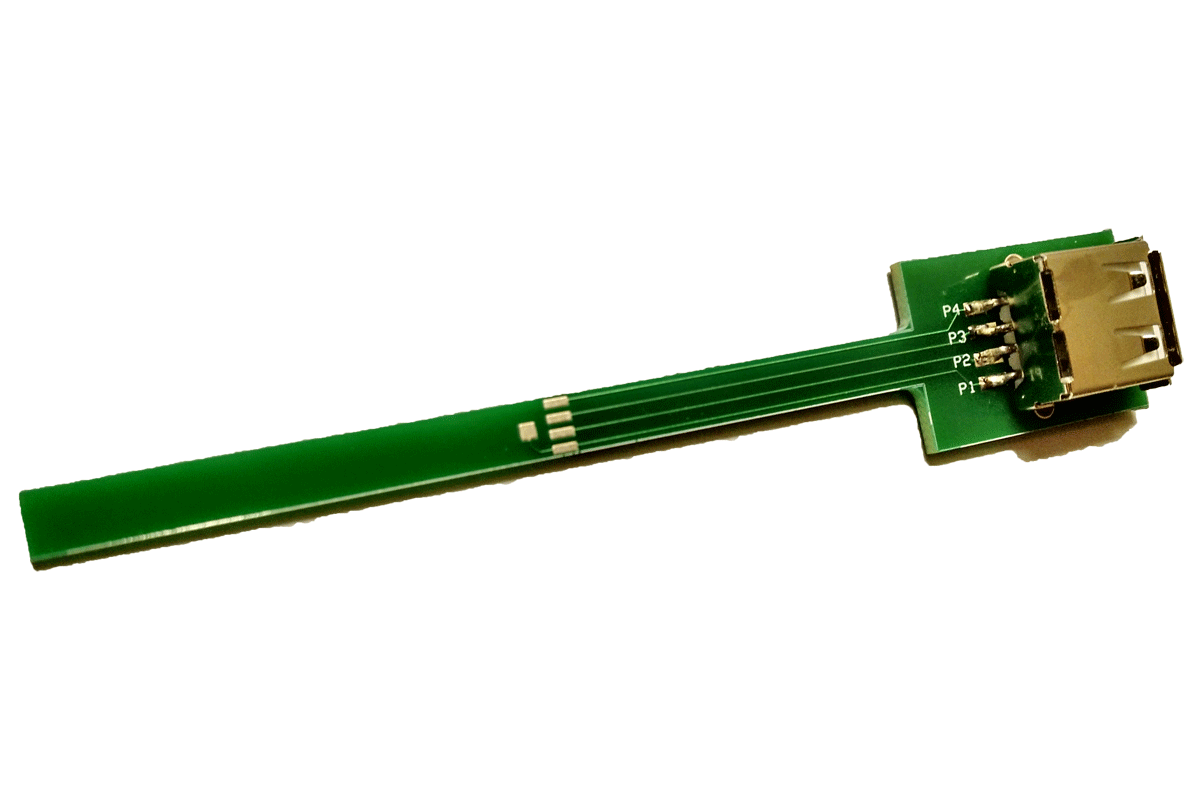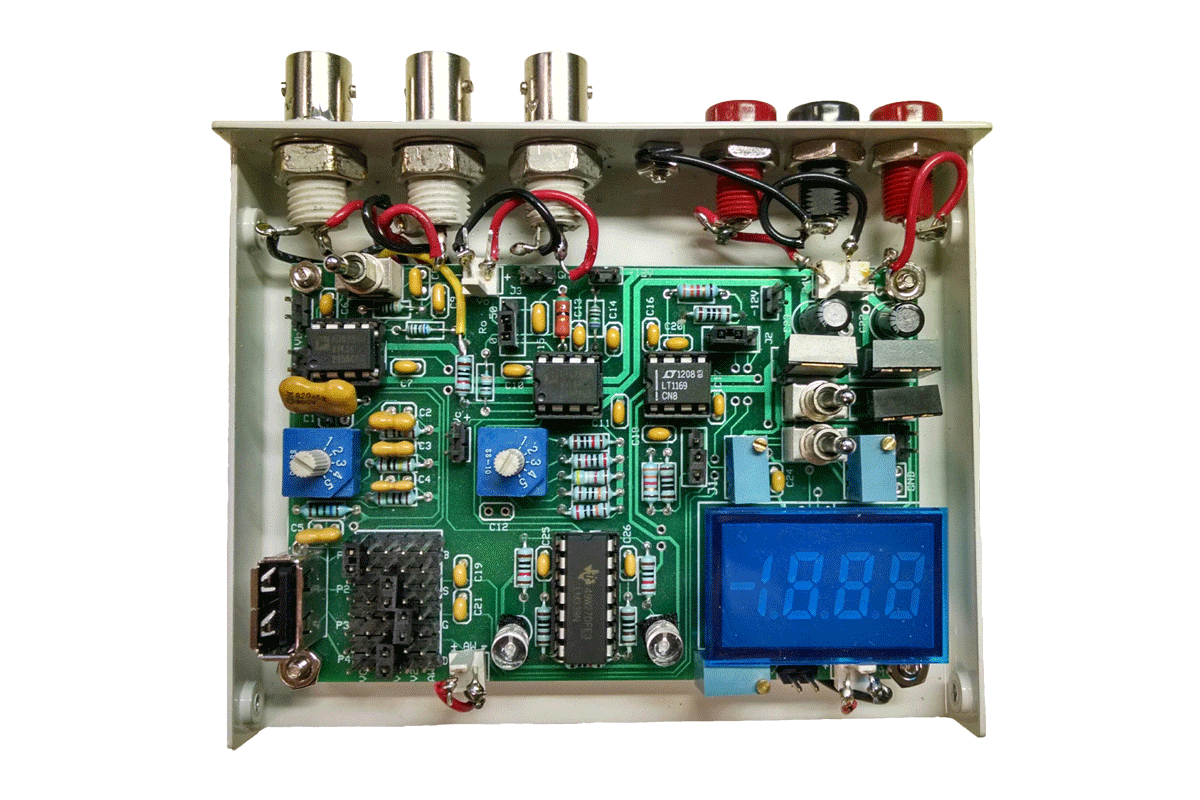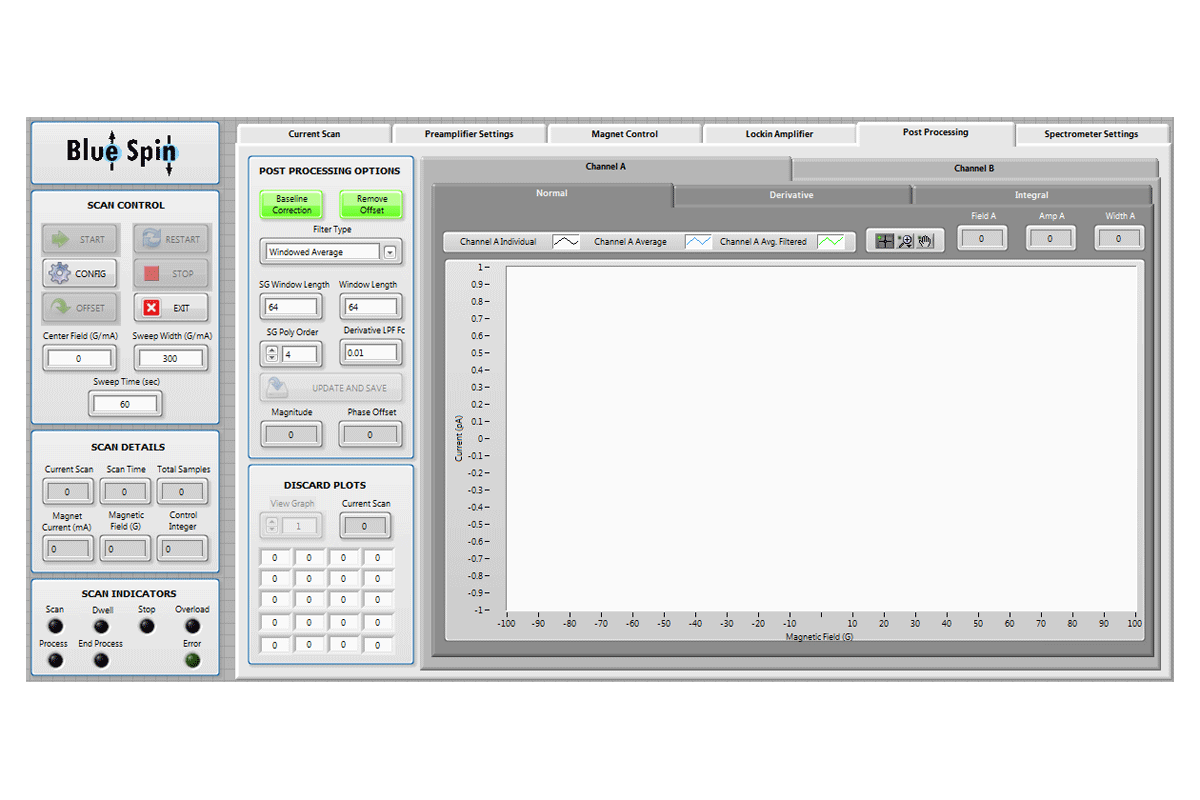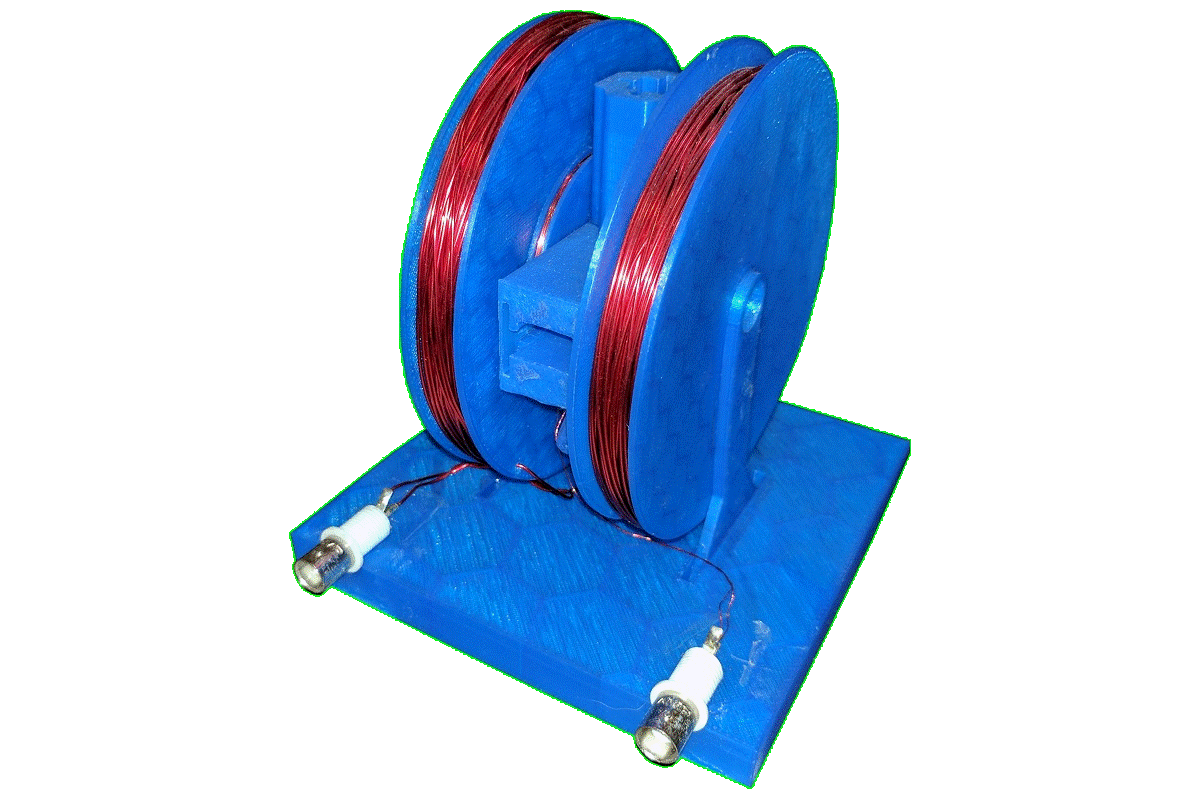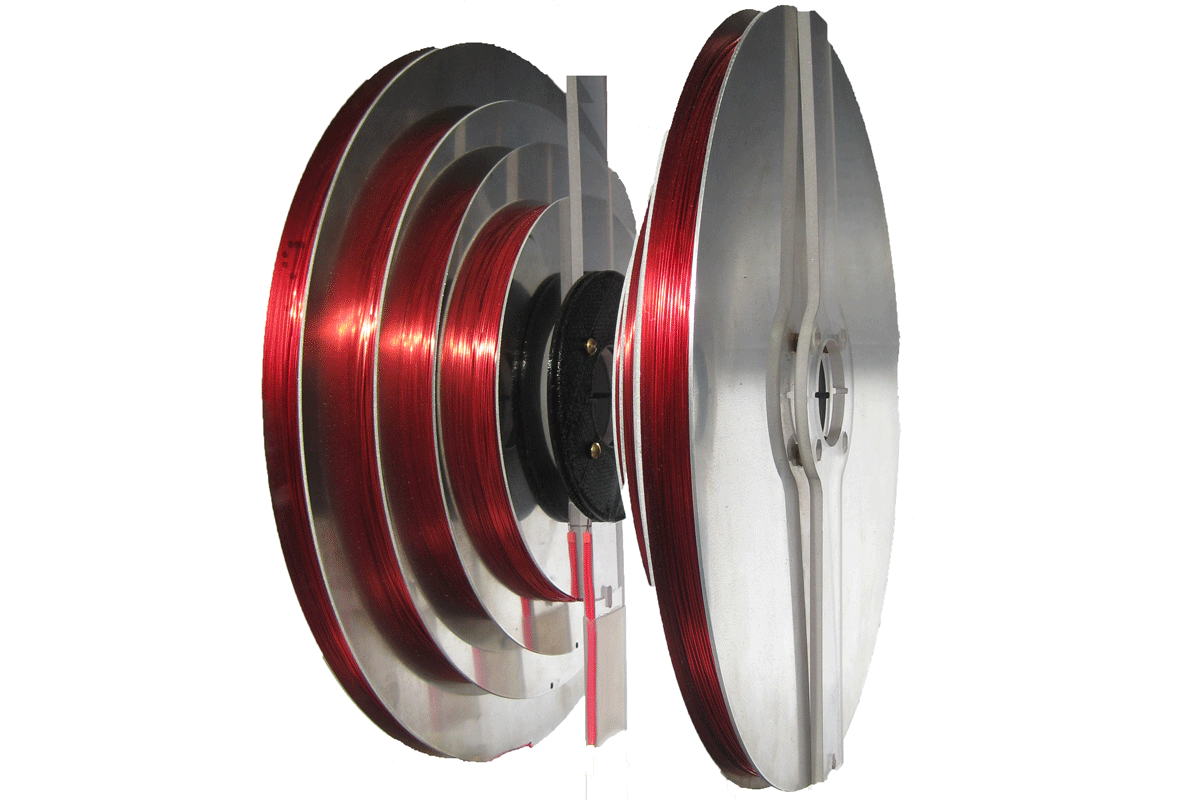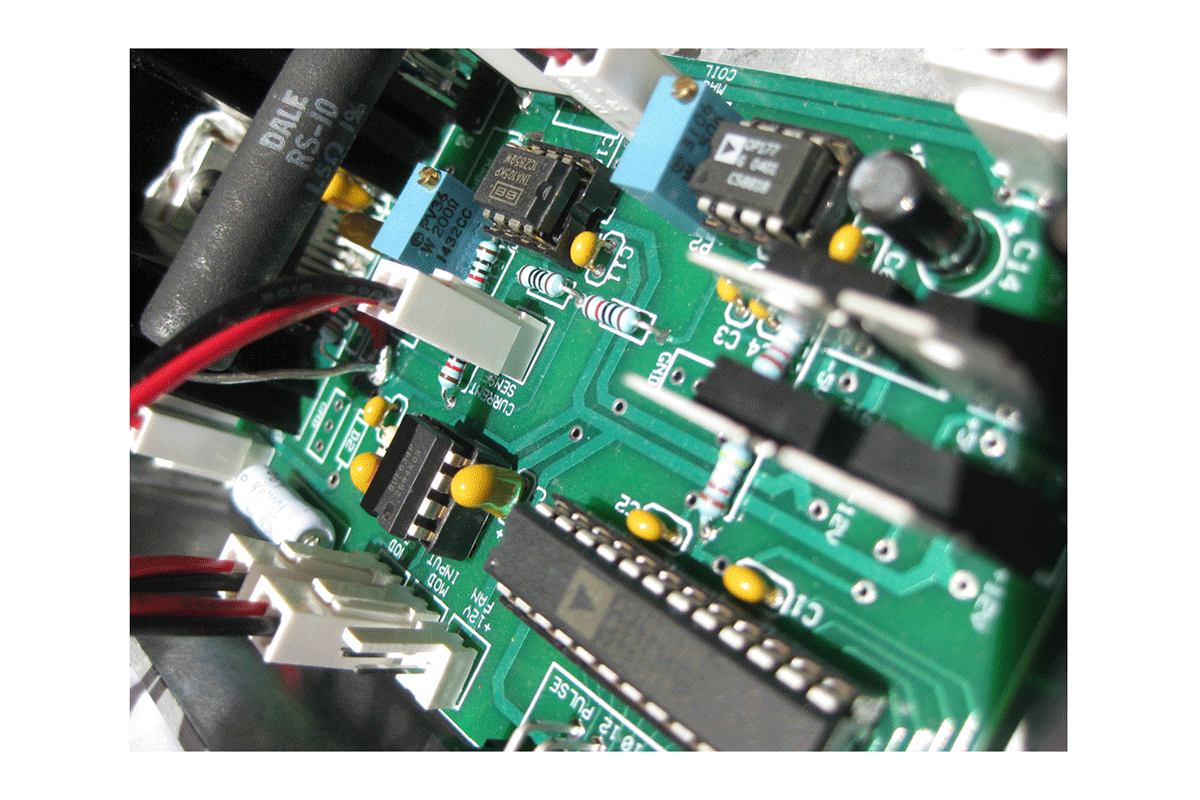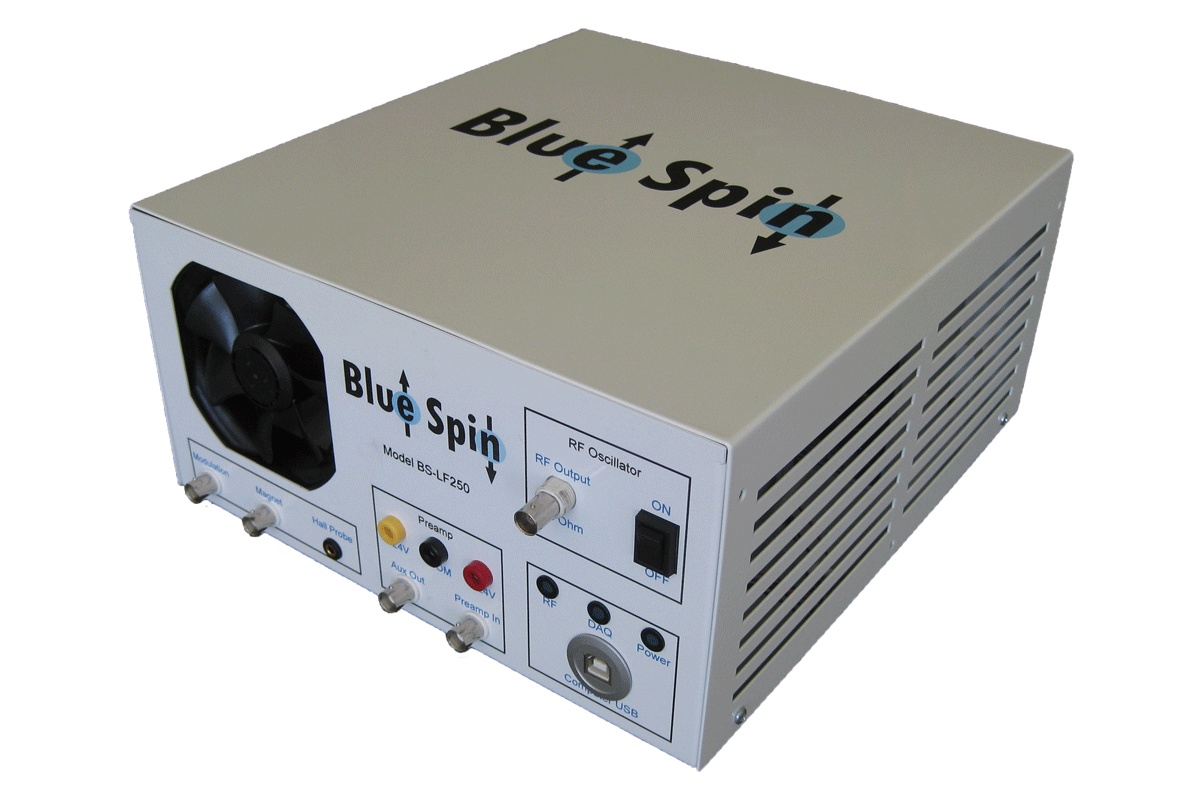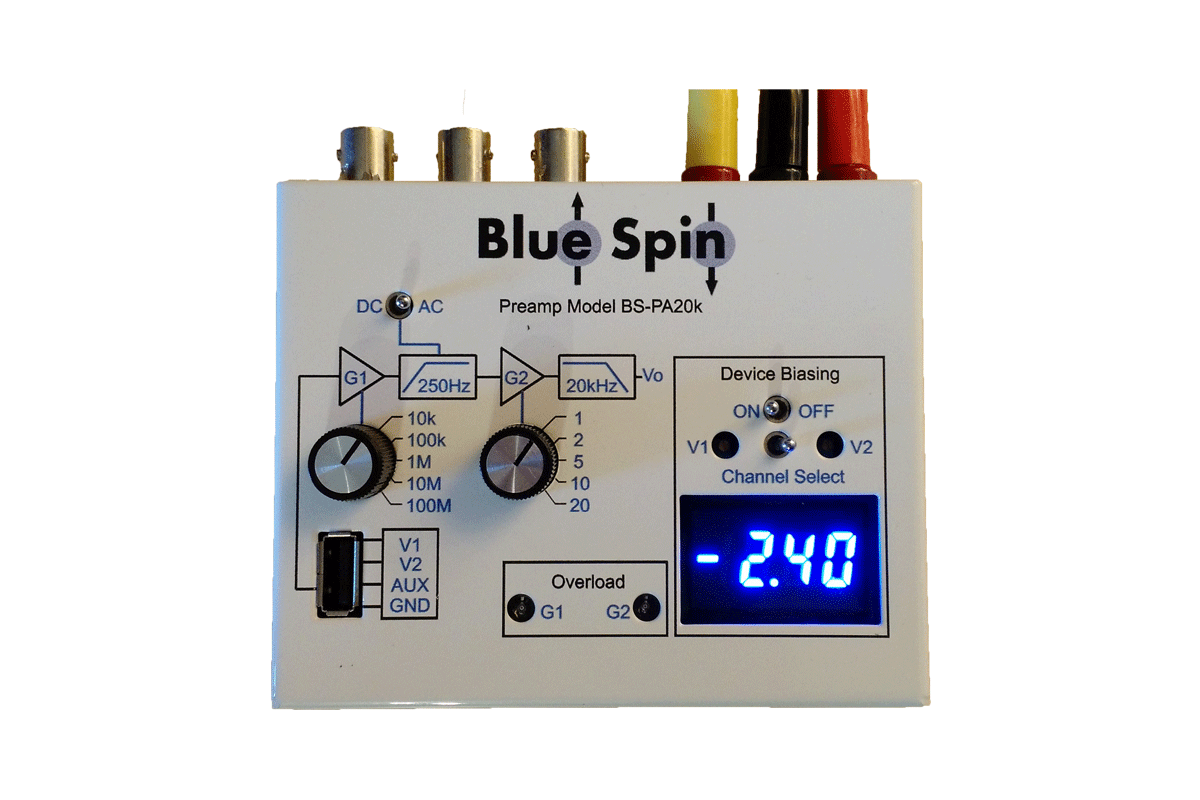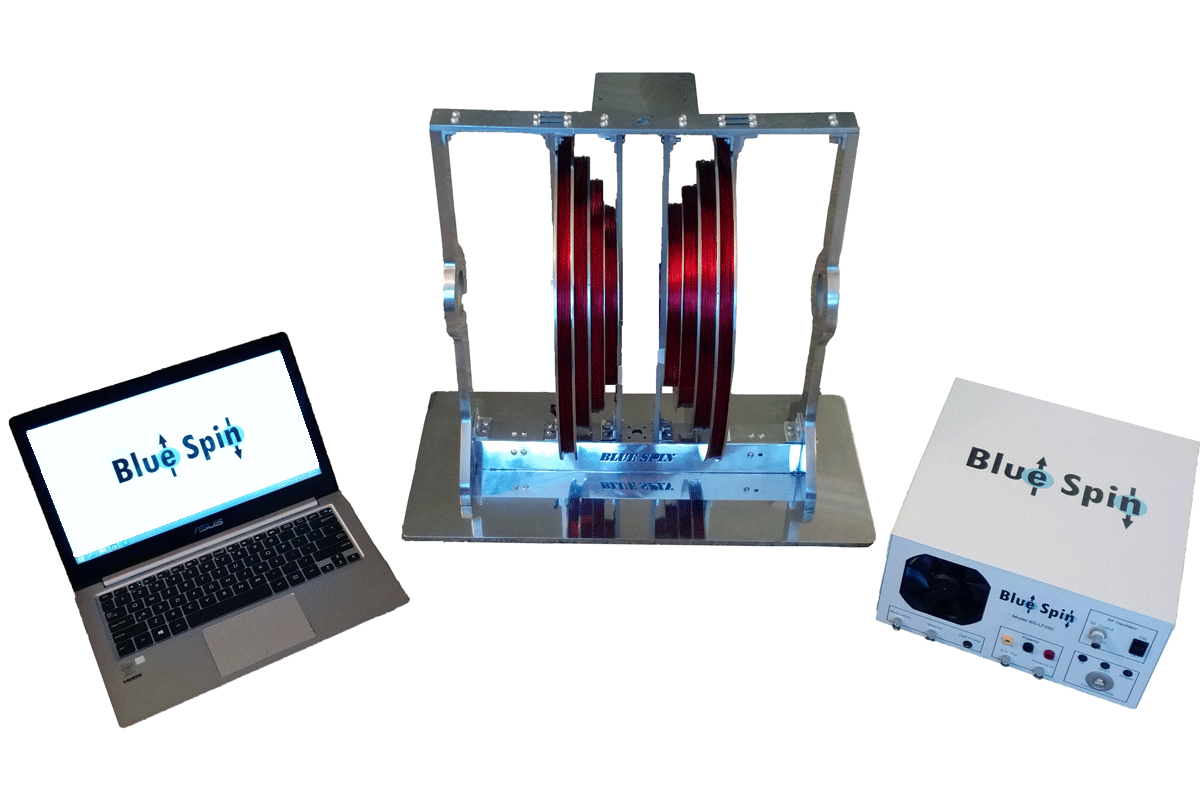Home
Blue Spin LLC specializes in the design and fabrication of zero- and low-field electrically detected magnetic resonance (EDMR) spectrometers which enables the detection of atomic scale defects in fully processed nano- and microelectronics. The spectrometers have wide uses in device reliability and serve as learning tools for those interesting in understanding spin transport mechanisms in microelectronics.
Our EDMR spectrometers have a sensitivity about 10 million times more sensitive than conventional electron paramagnetic resonance (EPR) spectrometers. Additionally, the spectrometers do not require cooling, are significantly less expensive, require less power to operate, and have significantly smaller footprints than their conventional high-field EPR counterparts.
Our spectrometers can be used for defect detection in a variety of devices including MOSFETs, BJTs, diodes, solar cells, and thin-film dielectrics. Additionally, defect detection is possible in a vast array of material systems including Si, Si/SiO2, Si/HfO2, SiC, SiC/SiO2 GaN, and organic semiconductors. Low-field EDMR spectrometers are very useful for, but not limited to,
- Atomic scale defect detection
- Defect density estimation
- Spin Dependent Recombination (SDR)
- Spin Dependent Trap Assisted Tunneling (SDTT)
- Time Dependent Dielectric Breakdown (TDDB)
- Bias Temperature Instabilities (BTI)
- Total Ionizing Dose (TID) Radiation Damage
- Magnetoresistance
- Low-Field Forbidden Transitions
What is EDMR?
Electrically detected magnetic resonance (EDMR) is the electrical detection of the electron paramagnetic resonance (EPR) of atomic scale defects within fully processed microelectronic devices. As defects typically have unpaired electrons, they are influenced by external magnetic fields which can alter various transport mechanisms within the devices such as spin dependent recombination (SDR), spin dependent trap assisted tunneling (SDTT), and or spin dependent scattering to name a few. Therefore, EDMR has found much use for defect identification in MOSFETs, BJTs, diodes, thin-film dielectrics, and solar cells. The low-field EDMR spectrometer offers many significant advantages over conventional EPR. These include, but are not limited to, (1) only those defects within the device which affect device currents are detected, (2) ~10 million times higher sensitivity due to the magnetic field independence of spin transport, and (3) weight, footprint, and costs are significantly reduced as chilled water cooling systems, large electromagnets, and microwave plumbing are unnecessary. The advantages of the zero-/low-field spin system do come at a cost however. Structural information conveyed by measurements of a defect's g tensor are not available in the zero field measurement and are significantly degraded in the low field measurement. Fortunately, the single most useful feature of the EPR measurement, the detection of electron nuclear hyperfine interactions, remains possible in both the zero field and low field measurements. Additionally, g strain becomes less prominent for measurements made at lower magnetic fields which results in the sharpening of EDMR spectra. This allows for better observation of the electron nuclear hyperfine interactions than the measurements made at much higher, and conventional, magnetic fields.
Product Description
We specialize in the development low-field EDMR spectrometers; however, we also build custom 3D printed Helmholtz coils and miniature biasing and signal conditioning preamplifiers which are used with our spectrometers.
Our first low-field EDMR spectrometer model, the BS-LF250-V1.0, includes the following components:
- Tablet/laptop
- Windows 10 platform with installed NI DAQ drivers and Blue Spin software
- Installed Software
- Standalone executable GUI designed in Labview 2016
- Digital lock-in amplification
- - Up to 40kHz magnetic field modulation
- - Two independent demodulators capable of higher order harmonic detection
- - Complete frequency, phase, and time constant control of each demodulator
- - User selectable input voltage range of +/-10V, +/-5V, +/-1V, +/-0.2V
- Digital electromagnet field control
- - Use proportional-integral (PI) digital field/current control
- - 16 bit resolution provides < 10 mG/level
- Signal processing suite: signal averaging, data logging, and data post-processing
- Low-Field Electromagnet
- 4 sets Helmholtz coils providing a uniform DC field
- 1 set of Helmholtz coils providing an AC modulated field up to 10 G
- Capable of +/- 150 G (max seep of 300 G across 0 G)
- Aluminum construction provides excellent heat dissipation.
- Electronics Enclosure
- Linear regulated power supply: +/-24 V, +/-2.4 A
- National Instruments USB multifunction DAQ: 16 bit, 400 kHz input and output sampling
- Magnet control, modulation, and Hall probe control electronics board
- RF VCO: 200-400 MHz with 16dBm output power
- Thermal cooling fan
- Preamplifier
- Front end current-to-voltage converter
- - selectable course gain of 10k, 100k, 1M, 10M, 100M
- Optional high-pass filtering stage
- - 2nd order Sallen-Key topology with fixed cutoff frequency of 250 Hz
- Additional gain stage
- - selectable fine gain of 1, 2, 5, 10, 20
- Backend low-pass filtering stage
- - 2nd order Sallen-Key topology with fixed cutoff frequency of 50kHz
- 2 independent +/-9V battery biasing supplies
- 1 auxiliary channel for external biasing
- Sample tees
- Set of 25 printed circuit board (PCB) used for mounting devices
- Each tee has 4 leads made of gold plating which can be wire bonded to
- 3D printed Housing
- Houses sample tee, RF tuning/matching circuit, and Hall probe
About Blue Spin LLC
Blue Spin is a limited liability startup corporation specializing in the design of low-field electrically detected magnetic resonance spectrometers. It was founded by Patrick M Lenahan and Corey J Cochrane at The Pennsylvania State University during the summer of 2013. The authors have numerous publications in the area of low-field EDMR (see below) and one pending patent on the development on such instruments.
- C.J. Cochrane, P.M. Lenahan, "Spin counting in electrically detected magnetic resonance via low-field defect state mixing", Appl. Phys. Lett, 104 (9), 093503, (2014)
- C.J. Cochrane, P.M. Lenahan, "Detection of interfacial Pb centers in Si/SiO2 metal-oxide-semiconducting field-effect transistors via zero-field spin dependent recombination", Appl. Phys. Lett, 103 (5), 053506 (2013)
- C.J. Cochrane, P.M. Lenahan, "Zero/low field SDR and SDT used for atomic scale probes of NBTI and TDDB", Proc. IEEE IIRW, South Lake Tahoe, pp:88-89, (2013).
- C.J. Cochrane, P.M. Lenahan, "Zero-field detection of spin dependent recombination with direct observation of electron nuclear hyperfine interactions", J. Appl. Phys., 112, 123714, (2012)
- C.J. Cochrane, P.M. Lenahan, "A Means to Study Reliability Based Defects in Fully Processed Devices Utilizing Zero-Field Spin Dependent Transport ", Proc. IEEE IIRW, South Lake Tahoe, pp:45-47, (2012).
Contact Us
Contact us at the following email for more information regarding products, sales, and further information
info@bluespinllc.com

